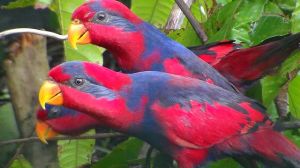
Through a joint effort of KOMPAK, the World Parrot Trust, the North Sulawesi Department for Conservation of Natural Resources (BKSDA SULUT) and PPS Tasikoki, 55 endangered red and blue lories were released back to their native range in Talaud Islands at the end of August 2014.
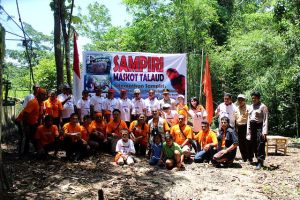
At the end of last year, police in the Talaud Island group encountered
a trader in Karakelang who had poached 111 red and blue lories (local name: Sampiri, Latin name: Eos histrio) and was trying to smuggle them to the Philippines. The species is listed as endangered on the IUCN Red List. The local police first tried to release the birds directly, but this was not possible, as the primary flight feathers had been removed by the poacher. The KSDA requested PPS Tasikoki to help out and transported the birds to Tasikoki, until another solution could be found.
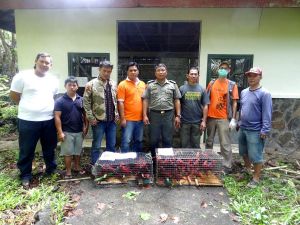
95 of the surviving birds arrived at Tasikoki in malnourished and weak condition, and a few sadly passed away in the first weeks. The medical team at Tasikoki was able to give the birds immediate care and medical support, helped by donations from World Parrot Trust and food supplements of special lorikeet mix donated by school children from the Victoria Shanghai Academy (Primary School) in Hong Kong.
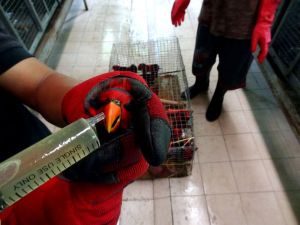
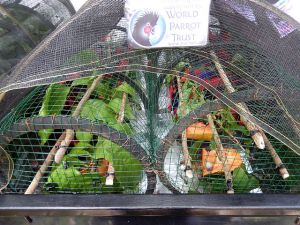
In the following months, with some intensive care, the birds returned to a healthy body weight and for many of the birds, the primary flight feathers grew back. In some cases this was only possible with veterinary intervention as follicles were infected by the harsh method of removing the feathers. Unfortunately for some of the birds, particularly the younger ones that had not yet gone through their first molt, their primary flight feathers are permanently damaged, and they are unable to fly. A lot of meetings between the parties involved in the project followed in order to find a suitable release site in the species’ home range, to be able to do formal health screens of the birds, finalise veterinary protocols for releasing the birds, translocation protocols, as well as discussing awareness campaigns on the Talaud Islands and a an array of preparations that need to be arranged prior to release.
By May, only about 35 of the birds were capable of flying a reasonable distance and more time was need to prepare the release. Eventually a total of 55 birds passed all requirements in order for them to be released. In August, the forest habitation enclosure that was built at Tasikoki was moved to the release site on Karakalang identified by KOMPAK as the original source of the lories so the birds could be returned to their original flock. With the habituation and release enclosure set-up, the birds could follow shortly after, accompanied by Tasikoki’s vet and head keeper. Karakalang island is approximately 15hr by boat from Manado, so a long journey back home – which was done by night ferry to reduce stress to the delicate lories.
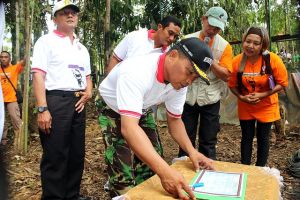
Following a traditional Sangihe-Talaud ceremony and conservation speeches, the release hatch on the habituation enclosure was opened on the 29th of August. The ceremony also included the signing of a joint declaration for law enforcement by the Talaud high court, the chief of Talaud police and local army deputy general. This was a significant breakthrough and success for KOMPAK’s campaign efforts to establish the Sampiri as the mascot for Talaud.
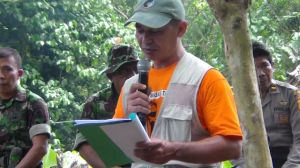
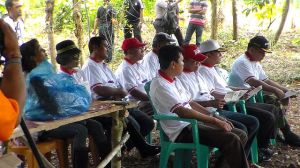
The poacher received a reduced jail sentence of 1 year and 4 months. This seems quite low for poaching an estimated 5-10% of the living wild population of such an endangered species, but nevertheless it is the highest punishment ever given for an illegal wildlife trafficking case in North Sulawesi. We hope this is a signal of stronger law enforcement in the future.
We would like to thank all the volunteers who helped and adopted/named the birds, plus the organisations who offered advice throughout the rehabilitation process such as the World Parrot Trust, ZGAP, Birdlife International, Flora & Fauna International, Rainforest Clinic for Birds, Wildlife Reserves Singapore and Loro Parque. Special Thanks go to Dr Dian Tresno Wikanti, Noldi Pinontoan, Claire Kelly, Thomas Matson, all PPST keepers, Mehd Halaouate and World Parrot Trust (who sponsored all the care and release activities), BKSDA SULUT and especially to Michael Wangko / KOMPAK, without whom the lories would not have a release site or possibly have been confiscated from the trader in the first place. KOMPAK (Karakelang Nature-Lover’s Community) are dedicated to stopping the trade in Sampiri and are still monitoring the released birds.
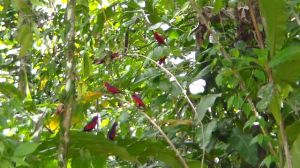
Dr. Dian planting a tree. At the right the lories back in the trees!
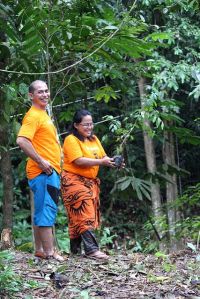
Leave a Reply